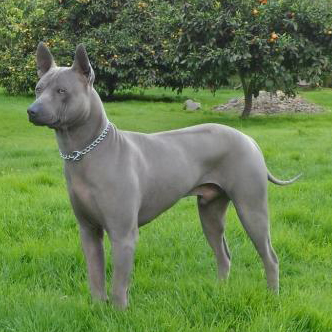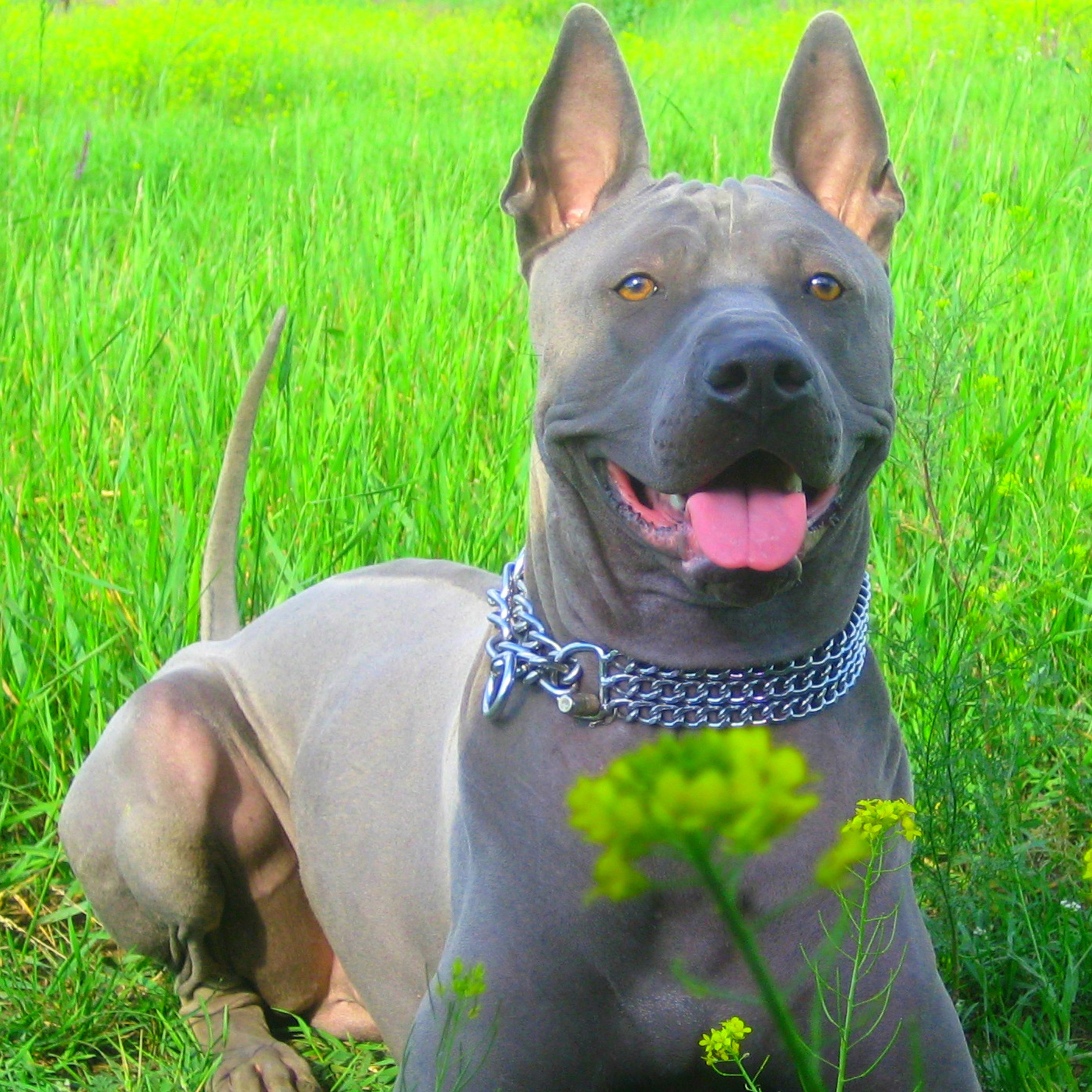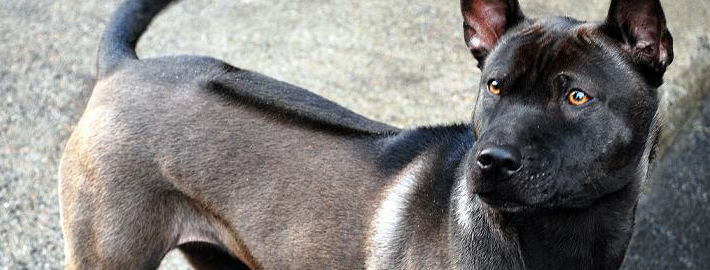What makes the Thai Ridgeback Unique?
Thai Ridgeback may be aggressive in attempts to protect its master. However, this trait is easily outweighed, as the breed is generally known as a loving addition to a family. Daily exercise for the Thai Ridgeback is suggested, as well as a place to rest in a warm spot of the house.
Breed Groups
Page Contents

SnapShot
| Size: | Males – 56 to 60 cm (22 to 24 inches) Females – 51 to 56 cm (20 to 22 inches) |
| Weight: | Males – 23 to 34 kg (51 to 75 pounds) Females – 23 to 34 kg (51 to 75 pounds) |
| Origin: | Thailand |
| Life Span: | 13 – 16 Years |
| Colour: | Black, Dark Brown / Chocolate, Gray / Salt & Pepper, Light Brown / Golden |
| Litter Size: | up to 5 puppies |
Is the Thai Ridgeback Right For You?
The Thai Ridgeback has a mind of his own. That’s probably the first thing you need to know about living with this interesting breed. He likes to have his own way, doesn’t give up until he gets it, and will quickly run your life if you give him half a chance.
This is a dog who will test your limits to see what he can get away with and will refuse to do anything he doesn’t want to do. He’s a terrific hunter, and small furry animals are ideal prey. It’s a good idea to keep him active and channel his energy and intelligence; overall health permitting, a dog sport or some kind of daily exercise such as jogging may suit him well. To top it all off, he is highly intelligent and a skilled escape artist, not to mention a talented counter surfer.
In a nutshell, this is not the breed for you if you want a dog who is willing to please, who will always obey you on the first command, who won’t kill your cat (or your neighbor’s cat), and who won’t give you any trouble.
In 5 Words
- Protective
- Athletic
- Loving
- Strong
- Intelligent

Characteristics
Learn About the Thai Ridgeback
Description
General Description
The Thai Ridgeback has a loose-skinned, muscular body. Its back is strong, firm and covered with dense hair. Coat colors include: chestnut, black, blue and silver. It has a ridge on its back, formed by hair growing in opposite directions which forms whirls and circles. The shoulders are strong and muscular. The head is carried high on the firm, strong, clean-cut neck. The muzzle is wedge-shaped and powerful looking. The tongue should be blue or bluish gray. The ears are large, high set, triangular, pricked and inclined forward. The top of the skull is flat and slopes gently to the stop. The dark-brown eyes are almond-shaped with an alert expression. The nose is black and the tail is thicker at the base tapering to the tip. The ribs are well sprung with no hint of a barrel appearance. The hind legs are long, moderately lean and bend slightly to the stifles. The back of the neck has extra rolls of skin when the dog is alert. This is particularly noticeable in puppies.
Short History of the Thai Ridgeback
The Thai Ridgeback was first noted more than 350 years ago in Thailand, but he is thought to be far older. One theory suggests that he is a descendant of the now-extinct Hottentot dog, which may have played a role in the development of the Rhodesian Ridgeback.
The Thai Ridgeback was an all-purpose dog, kept to guard property and serve as an alarm dog, escort or pull carts, hunt small and large game, and keep cobras at bay. He lived mainly in eastern Thailand, as well as on the island of Dao Phu Quoc, near the border of Cambodia and Vietnam. His relative isolation ensured that he maintained his distinctive look.
The breed has been in the United States since 1994. The United Kennel Club recognized the Thai Ridgeback in 1996, and it was recorded in the American Kennel Club’s Foundation Stock Service in 1997.
Temperament
Until recently the Thai Ridgeback was relatively unknown outside of eastern Thailand and is very rare elsewhere. This breed is a good watch, guard and hunting dog, but also makes a nice companion. Tough and active with excellent jumping ability. It is a very active and alert dog but also without socialization can be a bit aloof toward strangers. May be difficult to train. The Thai Ridgeback needs a dominant owner who understands the breed. One who has natural authority, in a firm but calm manner; confident and consistent with the rules placed upon the dog. A Thai’s owner that does not correct the dog at the proper times may find that the dog develops aggressive tendencies. With the right handler it is never too late to curb any unwanted behaviors once the owners learn how to properly treat the dog, along with providing the proper mental and physical exercise.
Caring for Your Thai Ridgeback
General Health
Due to natural selection the breed is very healthy. There have been identified only a few cases of hip dysplasia, PRA, entropion and dermoid sinus cyst.
Care
Daily
Because this dog breed originated in a tropical climate, the Thai Ridgeback generally does not do well in colder climates and should be kept as an indoor dog. The coat of a Thai Ridgeback requires little maintenance, however daily exercise is suggested to keep a healthy lifestyle for this breed.
Grooming & Bathing
The Thai Ridgeback does not need a lot of grooming. An occasional combing and brushing to remove the dead hair will do.
Exercise & Training
Thai Ridgebacks are very athletic and active dogs and will benefit from moderate amount of exercise (two long walks a day). They love to run.










